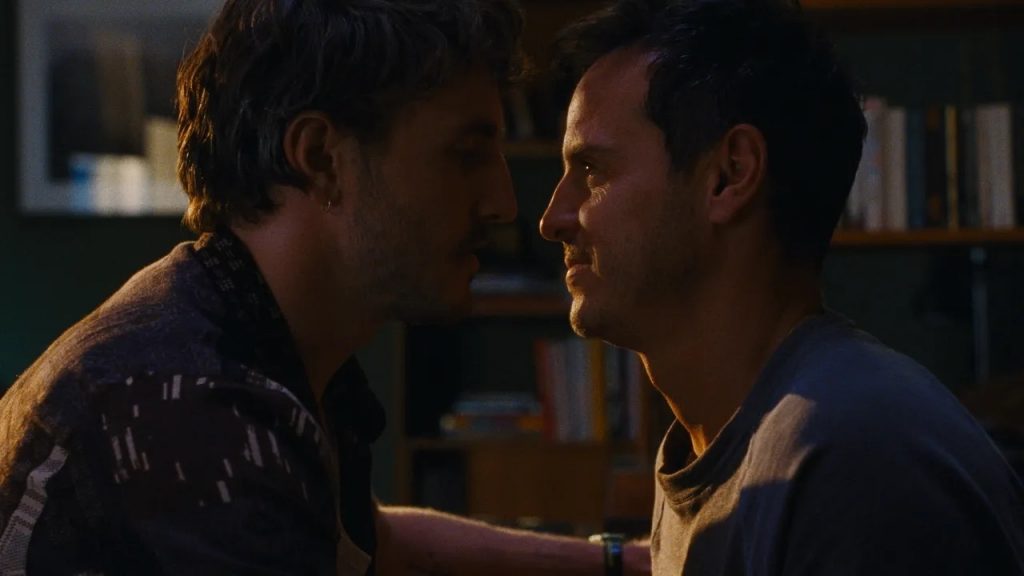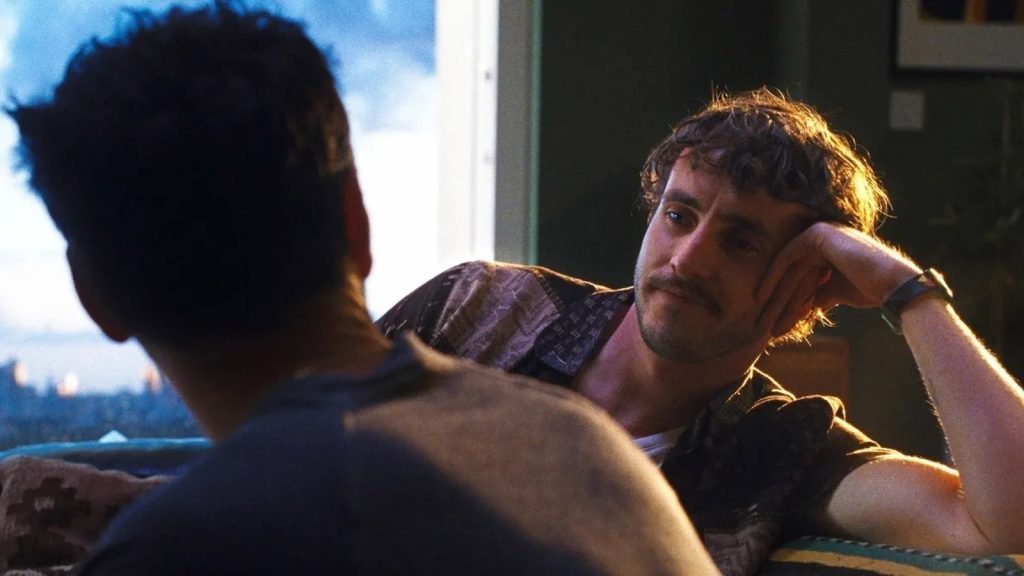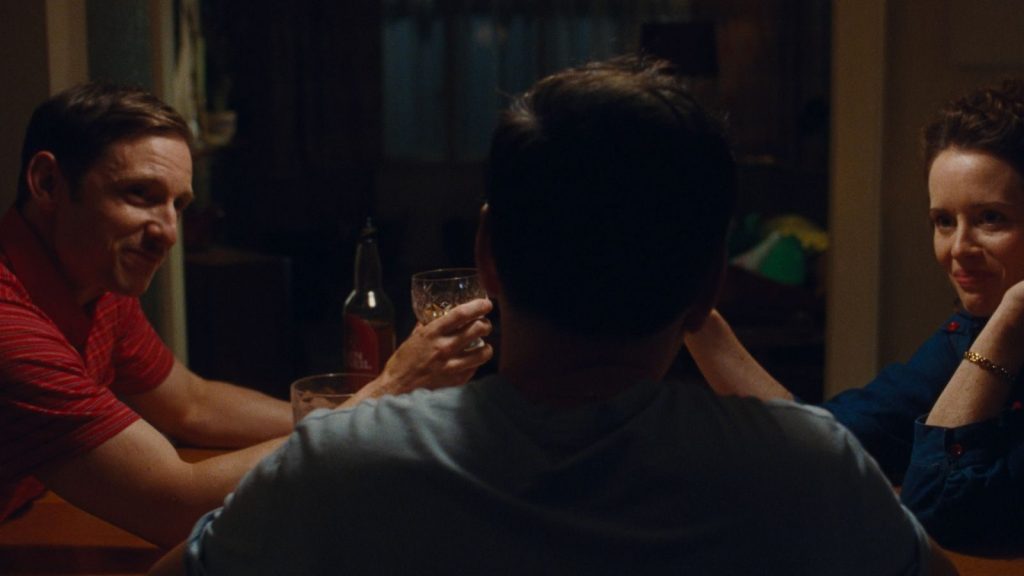
All of Us Strangers, from writer-director Andrew Haigh, tells a heartbreaking tale of a fortysomething man, Adam (Andrew Scott), connecting with a neighbor, Harry (Paul Mescal), as he finds himself mysteriously able to visit his parents (Jamie Bell and Claire Foy), who died thirty years earlier in a car accident. It’s an extremely effective film that works so well in no small part due to its careful construction.
Below the Line spoke with Jonathan Alberts, who has served as Haigh’s go-to editor consistently for almost a decade. He discussed incorporating the fantasy elements of the story, building it from separate footage, and the importance of certain scenes that almost didn’t make the final cut of the film. He also stressed the deliberate effort to instill a feeling of dislocation for audiences.
Alberts reflected on working with Haigh on a variety of projects and the way in which he moves freely back and forth between film and television. He likes them both but does have a preference, if only for the sake of how it is that he’s able to tell a particular story in a given amount of time.
Below the Line: Were you familiar at all with the original book that served as the inspiration for this film?
Jonathan Alberts: I wasn’t, actually. Andrew introduced me to it, and I decided not to read it. When I’m cutting films, I find that it’s sometimes better not to read it. Sometimes, it’s good to read it. But sometimes, when you read it, you’re thinking, why isn’t that scene included, or, what’s going on there? But, for this one, because it was loosely based on the book, I thought it would be better not to read it.
BTL: Have you read it since?
Alberts: I have not read it since, but it’s interesting, because so many people I know have read it, so I will. It’s on my stack.
BTL: You’ve worked with Andrew before, but what about this project specifically appealed to you?
Alberts: One of the biggest things was just the script. Andrew and I had been talking about the film when we were cutting a TV show called The North Water, and he said he was doing a really personal project next. Or maybe it wasn’t next, he wasn’t sure. He’s usually working on something in the background when we’re cutting.
It sounded pretty intriguing. When I read the script a few months later, it just felt so personal. It felt so specific to a time of growing up in the eighties for a particular group of people, for gay men in certain ways, but it also had this universal quality about grief and loss, and it felt like a very strong meditation on that.
I was really moved by the script. It read really, really well. Scripts do not always read that way. They don’t leap off the page, but this definitely was. It was super intriguing and I was engaged from the beginning to the end. Our first initial conversations came out of that and I was pretty excited about it.

BTL: There’s a certain questionably fantasy element to it that’s never quite really explained. Films will often use a different color or different framing to indicate what scenes might be taking place that aren’t necessarily part of the real narrative. Was that something that you wanted to do or that you felt like you did do in separating out what this main character was going through?
Alberts: Yeah. We talked a lot about the tone and what it was going to feel like, because it wasn’t a straightforward drama. It had this supernatural element to it. We talked a lot about the sound, we talked a lot about the music, and we talked a lot about things transitionally, about overlapping dialogue and playing dialogue twice.
In the beginning, Andrew had a lot of different ideas, and as I went back and started thinking about things, I wanted to bring, editorially, a way to amplify those moments that you’re with the parents and you’re coming back to the house with Harry and Adam, between those two parallel stories. There was a lot of talk about tonally how that was going to feel and how we could make it work and really push that fantastic element with it still staying within a feeling of naturalism.
BTL: How did the footage come to you? Were things presented in chronological order as we see them, or by segment of the story?
Alberts: No, it was all segment. We didn’t shoot in in order. When I started and sat down, the first stuff we started with was when Adam goes back to his parents’ house. That was all the first stuff we shot, all the stuff at the parents’ house, we shot in the first two weeks of a seven-week shoot. We started in the supernatural side. It wasn’t until I got it together that we started to really understand the relationship between those two parts.
BTL: What was the biggest challenge for you in cutting this story?
Alberts: Well, that’s a good question. What was amazing and kind of incredible was we ended up cutting for about a year on the film. I think we thought we’d be finished sooner than we were, but there were so many different elements, and complicated elements that played into it, that once we started to unpack it in terms of performance, in terms of story, in terms of the structure of the film, we realized it was challenging tonally in terms of how we were going to tell it.
One of the funny things was just all of those experimentations, a lot came out of them. While we were shooting and shortly after as we got into the director’s cut, so many different ideas started presenting themselves. It was really trying to find the best way to tell the story, and the challenge was constantly, how do we get between these two worlds, not just in terms of length, but in terms of feeling. I have so many versions of so many scenes, so many versions of the whole film in general that we watched. It felt surely like a couple hundred times.
There’s a dislocation in the film. There’s a part when you begin that you don’t know anything about the story. It’s almost a little confusing, and we wanted the audience to have this sense of dislocation. It was trying to understand, how do you make an audience feel dislocated but then anchor them so that it’s not just this confusion and this annoying thing when you’re building it? We wanted it to be something where an audience felt dislocated and then they felt anchored, and then they felt in very good hands, so it was tough to find them.

BTL: From all those different versions, is there anything that sticks out that would have really changed either the tone or the impact of the story in your mind?
Alberts: Yeah, a lot of things that we didn’t actually choose because they didn’t actually work. Sometimes Andrew would leave and I’d be busy cutting for another few hours in the evenings or on a Saturday. I spent a lot of Saturdays experimenting with things. Out of those experiments, some things stick and a lot of things don’t, but what comes out of some of the things that don’t stick are ideas.
In All of Us Strangers, there were all these different ideas that came out where I was like, oh, this is kind of interesting, even though I don’t think this small little montage that comes out of this scene is really right for that moment. Sometimes you don’t know until you put it within the film, and then you watch the whole thing, where you’ll be able to say, “It’s great on its own, but it doesn’t work as a whole.” It was constantly going back and forth and trying to find that.
The fact that we were cutting for such a long time, we were able to just finally decide, okay, this is right and this isn’t. There were a lot of things we lived with in the edit for quite a long time that were in there and in there, and then suddenly Andrew would say to me,
What do you think about this bit?” Or I would say, “We dropped this scene.” There was a scene that we dropped and we had out of the film for quite a long time that only in the last couple of months we brought back. It’s actually a pretty critical scene, which is when after Adam visits his parents and they’re all sitting around and the Alison Moyet is playing in the background, and they’re all talking about the memories.
That was a scene that stayed out of the film for quite a long time. There were always interesting things like that that were like, oh god, what if we had left that out? But again, you just go through and you go through and you have to be very, very thoughtful about what’s working and what isn’t, which is hard.
BTL: One sign you made the right choices is when I saw this film in a theater, people around me were just sobbing. Have you had a chance to see the film with an audience?
Alberts: I did. I was lucky enough to go to Telluride, where it premiered, and I’ve seen it three times. I saw it at Telluride. I saw it at New York Film Festival, and I saw it at BFI, because I wanted to see it with a British audience. It blew me away. I think it’s always a strange experience to see a film that you’ve been living with for such a long time with an audience and just to feel the emotion in the room and to hear the emotion in the room.
For things like dramas and fantasies, you don’t often hear an audience react. If it’s comedy, you hear people laughing and you can gauge, is it working or is it not working. With something like this, you never know because people are perfectly quiet, and at the end, they’re like, oh, that was great. Or it was not.
It was pretty incredible to hear and feel an audience, and at Telluride some people came up to us after the screening and were talking about what it meant to them and what they took from it in their own lives. It was pretty incredible and it was pretty scary too. It was terrifying playing it for the first time.
BTL: How has your relationship with Andrew Haigh evolved over the past decade or so of working with him?
Alberts: Well, it’s been a really interesting creative relationship, and it’s grown into a really close friendship. It’s been great on both accounts. We’ve worked on so many different things, basically everything that he’s done except for Weekend, which is a film that I loved. When I saw that film I was like, oh, it would be great to work with him. I just felt so lucky that we ended up connecting and ended up working together.
Our relationship is one that’s evolved. We really have a shorthand, but also we kind of share a sensibility about the world, about filmmaking. We don’t agree on everything, which is probably the best thing, but we certainly have an ability to think and talk about film, about music and sound. It’s great.

BTL: You seem to go between a lot of different things, like The North Water to this is quite a shift, even if they’re both with Andrew. You also worked on Hung and The OA. You don’t seem to have any one thing that you’re going for. You really like to do everything.
Alberts: I do. It’s interesting, because I think what I’m usually attracted to is story. I’m attracted to things that feel honest to me, things that feel truthful to me, things that have an authenticity, and that’s what I look for. You try, when you get scripts or you meet filmmakers, to find those things within that.
It’s a competitive world out there. There are not just great scripts lying around. Those things don’t come to you often enough. It’s trying to find that and trying to mesh with the filmmaker, that’s the experience that I love. I love the idea of doing things that are really different, but I always like things that have a certain amount of heart and have a certain amount of honesty in them.
BTL: You seem to be comfortably shifting between television and film. Do you enjoy both mediums similarly?
Alberts: I do. I think, probably, if I had to choose, I’d probably choose film because it’s such an immersive experience. I really like the experience in television as well, but it’s a very different kind of thing. There’s a lot more people, it’s a much more group-focused collaboration. You’re working with multiple directors oftentimes. You’re working with other editors.
So it’s a really different kind of thing, which is nice to break things up, but with a film, my favorite thing is just to work with the director, and it’s pretty much the two of you working together and trying to make the film the best it can be. So, probably film. But I do like to mix it up and work in both mediums.
All Of Us Strangers is now playing in theaters.





